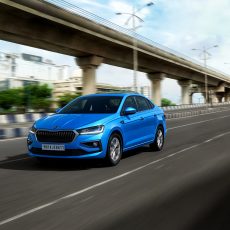 Electric cars were the bestselling vehicles in the US more than a century ago. Can they make a comeback?
Electric cars were the bestselling vehicles in the US more than a century ago. Can they make a comeback?
Words: Sarmad Kadiri and Saeed Akhtar
The electrification of the automobile is inevitable,” says Bob Lutz, Vice Chairman – General Motors. A recent study by Capgemini had an interesting revelation. It states that 41 percent of consumers – up from 36 percent the prior year – currently own a fuel efficient and/or alternative fuel vehicle. Another 30 percent said they plan to buy one, further certifying the fact that electric vehicles (EVs) are a vital force in the future of automobile technology.
The electrical waves can be felt in India as well. Recently the Chief Minister of Delhi, Sheila Dixit unveiled GM India’s debut electric car, the e-Spark. Manufactured under technical collaboration with REVA, it is a bold move by the US firm into the electric vehicle segment and is one of India’s first four-door passenger EV. This initiative has redefined how automotive companies in India are planning for future mobility solutions keeping the carbon footprint and environmental issues in mind. Karl Slym, President and MD – GM India said, “We hope the central and state government will extend the necessary support to develop the infrastructure for electric vehicle charging and providing specific financial benefits to consumers, who make the choice to adopt an environment friendly mode of personal transport.”
Governments and other public sector bodies from the U.S., France, the UK and other countries are making significant investments in the development of electric vehicles and introducing various tax credits, incentives and subsidies. In India, power distribution company BSES is encouraging people to go green by offering a free charge facility to owners of REVA electric cars at its various locations in central and east Delhi.
Hyundai showcased the i10 electric at the Frankfurt Motor Show and later unveiled it closer home during the Auto Expo 2010. Arvind Saxena, Director (Marketing and Sales) for the Korean carmaker said that there is a growing awareness amongst consumers for all things green which inspired Hyundai to introduce the electric version of the i10. Saxena hopes that this heightened interest will present a huge opportunity to bring in more EV technologies to the Indian market in the near future.
EV development is being strongly fueled by consumer demand. In particular, hybrid gas/electric cars are the most commercially mature and viable of the various kinds of alternative vehicles and have demonstrated the potential to reduce fuel consumption and exhaust emissions. It is the primary type of alternative fuel vehicle that consumers currently own or plan to buy. Unfortunately, hybrid electric vehicles still represent only a small share of the overall car sales – estimated at about one percent in Europe and two percent in the U.S. Nevertheless, the continued volatility in oil prices, a growing focus on ecological issues and the ongoing improvement of technologies should lead to an increasingly favourable environment for electric vehicle sales. The global sales of hybrid electric vehicles may surge at a compound annual growth rate as high as 12 percent over the next few years.
 ELECTRIC VEHICLE TYPES:
ELECTRIC VEHICLE TYPES:
In a general sense, electric vehicles are powered by electricity to some degree or another and can be broadly divided into three categories:
1. Gasoline/electric hybrid vehicle – It has both a gas and an electric motor and is based on two energy carriers, liquid and battery. This hybrid typically has a limited electric range. The electric propulsion can be mobilized for short urban trips, but the true utility of the electrical energy is to serve as a boost for the gas engine. The electricity is produced in the vehicle (recovery through regenerative braking) and these vehicles do not need to be recharged.
2. Rechargeable hybrid vehicle – Also called a plug-in vehicle, it is primarily an electric vehicle that also has a small combustion engine. Typically it can be used at 100 percent electric power in the city with a distance capability per charge of approximately 50km. Electricity must be provided by the electric network grid. This type of vehicle does not require complicated recharging terminals; existing electrical outlets in most public and private parking areas may be sufficient.
3. Fully electric vehicle – A 100 percent electric vehicle without any type of heat engine. A pure electric vehicle requires an infrastructure for recharging batteries. Currently, the distance capability per charge of a pure electric vehicle is still low (about 200km) and the cost is high.




